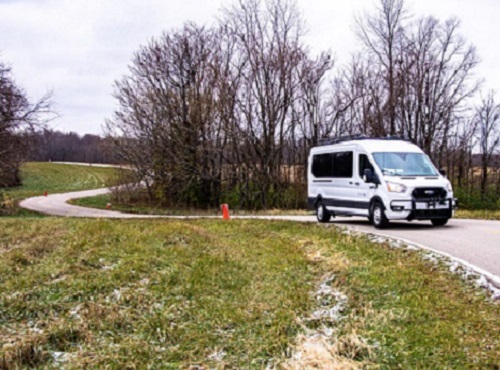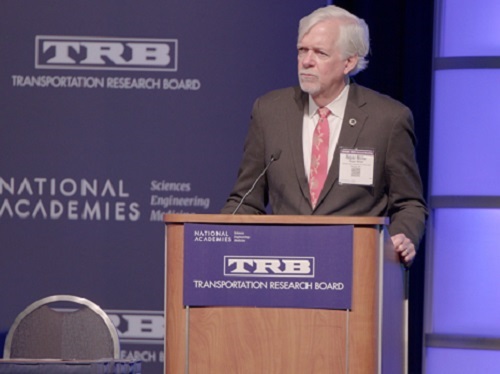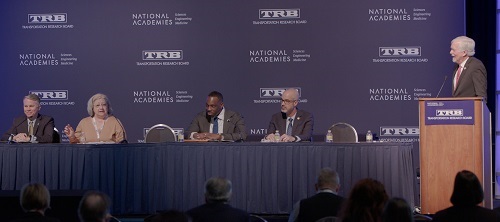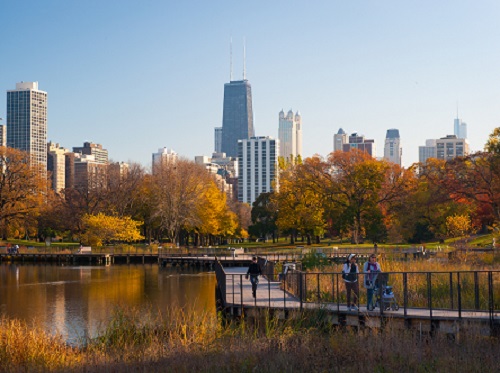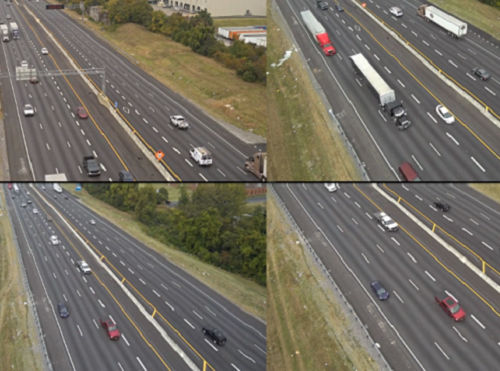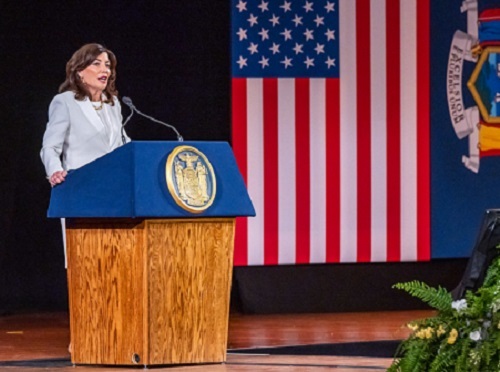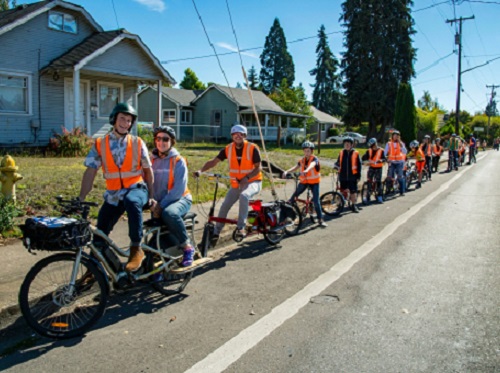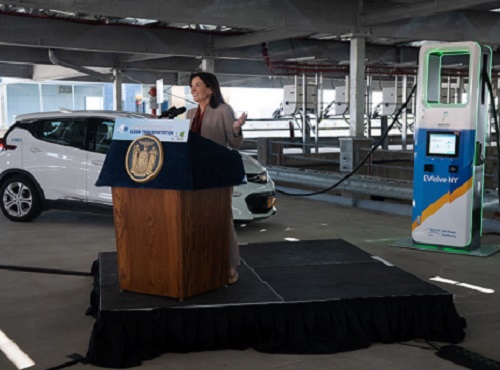Automated vehicles are slated to begin operating on rural roadways in central and southeast Ohio as part of the Rural Automated Driving Systems or RADS project spearheaded by DriveOhio, a division of the Ohio Department of Transportation.
[Above photo by DriveOhio]
Funded in part by a $7.5 million grant from the U.S. Department of Transportation, this project aims to demonstrate how connected and automated semi-trucks and passenger vehicles could improve safety for drivers, passengers, and other travelers in rural settings. The project, which focuses on 32 counties in Ohio’s rural Appalachian region, is the most comprehensive testing effort yet to be conducted on rural roads in the United States.
It is focused on gathering data on how automated vehicles operate in rural areas when navigating around curves, over hills, and in and out of shaded areas, according to DriveOhio Executive Director Preeti Choudhary.
“Automated driving systems are expected to transform roadway safety in the future, and the data collected with this project will be used to refine the technology to maximize its potential,” she explained in a statement. “This critical work will provide valuable information to help advance the safe integration of automated vehicle technologies in Ohio and across the nation.”
“The rural Appalachian area surrounding Ohio University would greatly benefit from using autonomous vehicles to deliver goods and transport people, but the road conditions are very different than urban and suburban regions,” said Jay Wilhelm, associate professor of mechanical engineering at the school, which is assisting with the rural road tests.
“This project gives us an incredible opportunity to test automated vehicles in rural areas and gather data to demonstrate the unique challenges and work towards solutions,” he said. “Our goal is to bridge the technology gap in rural Appalachian communities so automated vehicles can improve quality of life throughout the region.”
[Editor’s note: In October 2021, the American Association of State Highway and Transportation Officials published a policy paper outlining the 10 key policy principles needed for connected and automated vehicles or CAVs – a paper intended to be a “living document,” reviewed and updated every year to reflect changes in technology and policy. To access that paper, click here.]
DriveOhio noted that the vehicles being used in its rural roadway project have already undergone testing at the 4,500-acre proving grounds operated by the Transportation Research Center in East Liberty, Ohio –providing closed roadway testing over a full range of navigational situations that are encountered in everyday driving before the driving automation system equipped vehicles are taken onto public roadways and highways.
In addition to rigorous testing at the TRC, the deployment relies on high-definition mapping of specific routes that is then verified by professional drivers before engaging the automated technology. These maps provide the advanced driving system precise information about the surrounding environment including explicit roadway characteristics such as lane widths and the location of signals, crosswalks, and nearby buildings.
The first part of this rural road test involves three passenger vehicles equipped with AutomouStuff technology traveling on divided highways and rural two-lane roads in Athens and Vinton counties. They will be tested in different operational and environmental conditions, including in periods of limited visibility and in work zones. When the automated driving system is engaged, the technology will control steering, acceleration, and braking. Throughout the year-long deployment, a professional driver will always be in the driver’s seat with their hands on the wheel, ready to take over if needed.
“Many vehicles on the road today already have some degree of automated driving system technologies like adaptive cruise control, lane keep assist, or emergency braking,” DriveOhio’s Choudhary noted. “Those systems are meant to enhance safety, but they certainly don’t replace the human driver.”
The second part of the test features a pair of 53-foot platoon-equipped tractor-trailers connected by technology that enables them to travel closely together at highway speeds. When the trucks are connected, the lead vehicle controls the speed, and the following vehicle will precisely match braking and acceleration to respond to the lead vehicle’s movement.
The trucks used in this project are equipped with radar to detect other vehicles. This technology allows the trucks to monitor and react to the environment around them in certain ways, such as following the lead vehicle and responding to slower-moving traffic; however, human engagement in the driving task is critical. Like the first deployment, a professional driver will always be in the driver’s seat with their hands on the wheel, DriveOhio said.
The trucks will first be deployed on the 35-mile U.S. 33 Smart Mobility Corridor, specifically designed for testing smart and connected vehicles. Later in 2023, a private fleet will begin using the trucks in their day-to-day business operations.
In addition to benefits like increased efficiency and reduced fuel consumption for fleets, the development of this technology ultimately aims to reduce human error, making Ohio’s roads safer, Choudhary stressed.
Other state departments of transportation are engaged in similar automated vehicle testing.
For example, the Pennsylvania Department of Transportation is participating in autonomous transit vehicle testing in Philadelphia, along with researchers from Drexel University and consulting firm AECOM. The testing involves a mid-size electric autonomous shuttle bus shuttling passengers from the Philadelphia Navy Yard to the Southeastern Pennsylvania Transportation Authority’s NRG Station through the spring of 2023.
Meanwhile, in August 2022, the Minnesota Department of Transportation helped launch a free, low-speed, driverless, all-electric, multi-passenger shuttle service called “Bear Tracks” for the city of White Bear Lake.
In March 2022, the North Dakota Department of Transportation issued funds to support a range of autonomous systems research aimed at helping the agency develop and maintain the state’s transportation system.
Additionally, the Virginia Department of Transportation helped vehicle maker Audi of America test a cellular vehicle-to-everything or C-V2X system over a two-year period that incorporated autonomous operations as well as other safety innovations.

